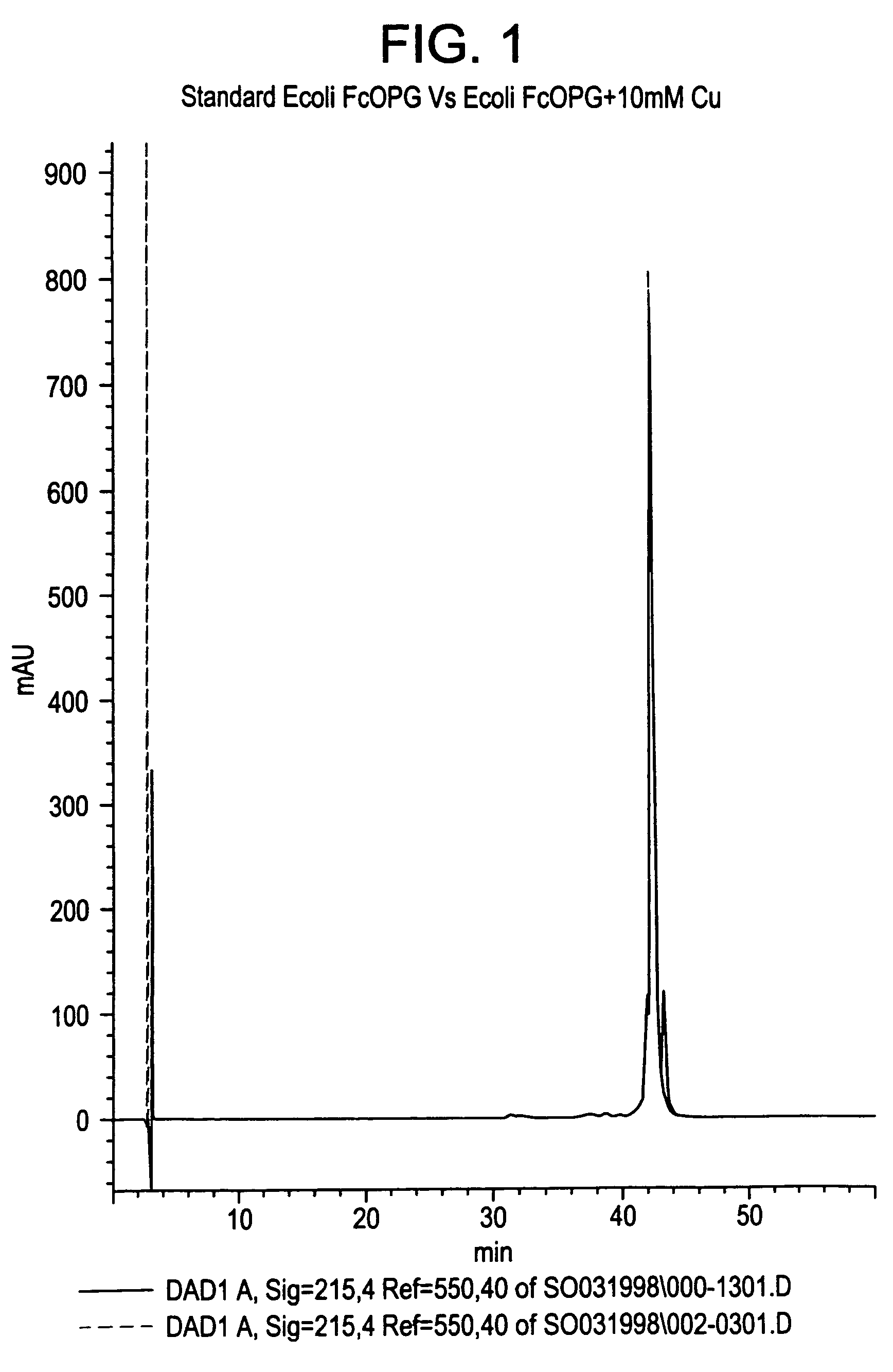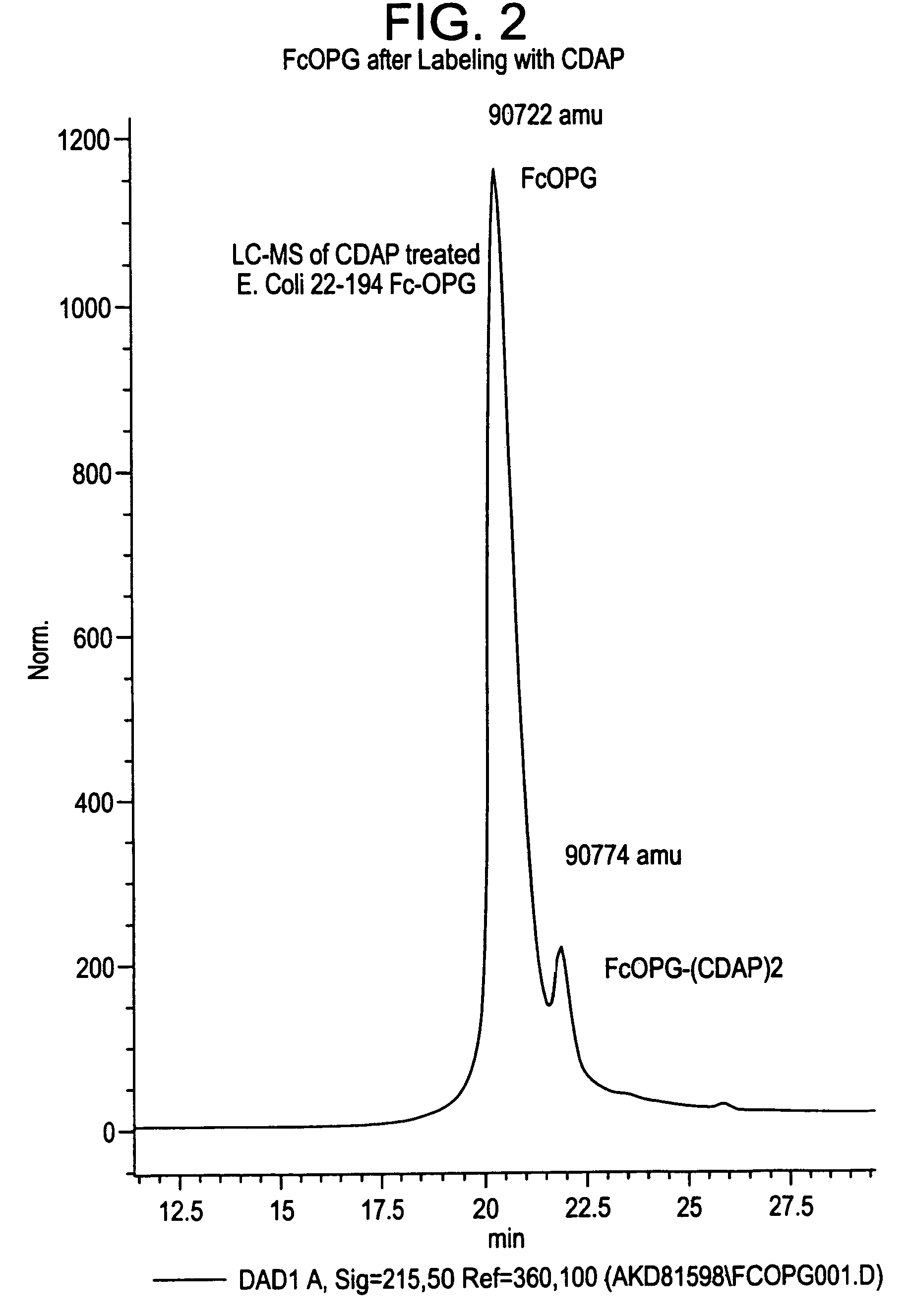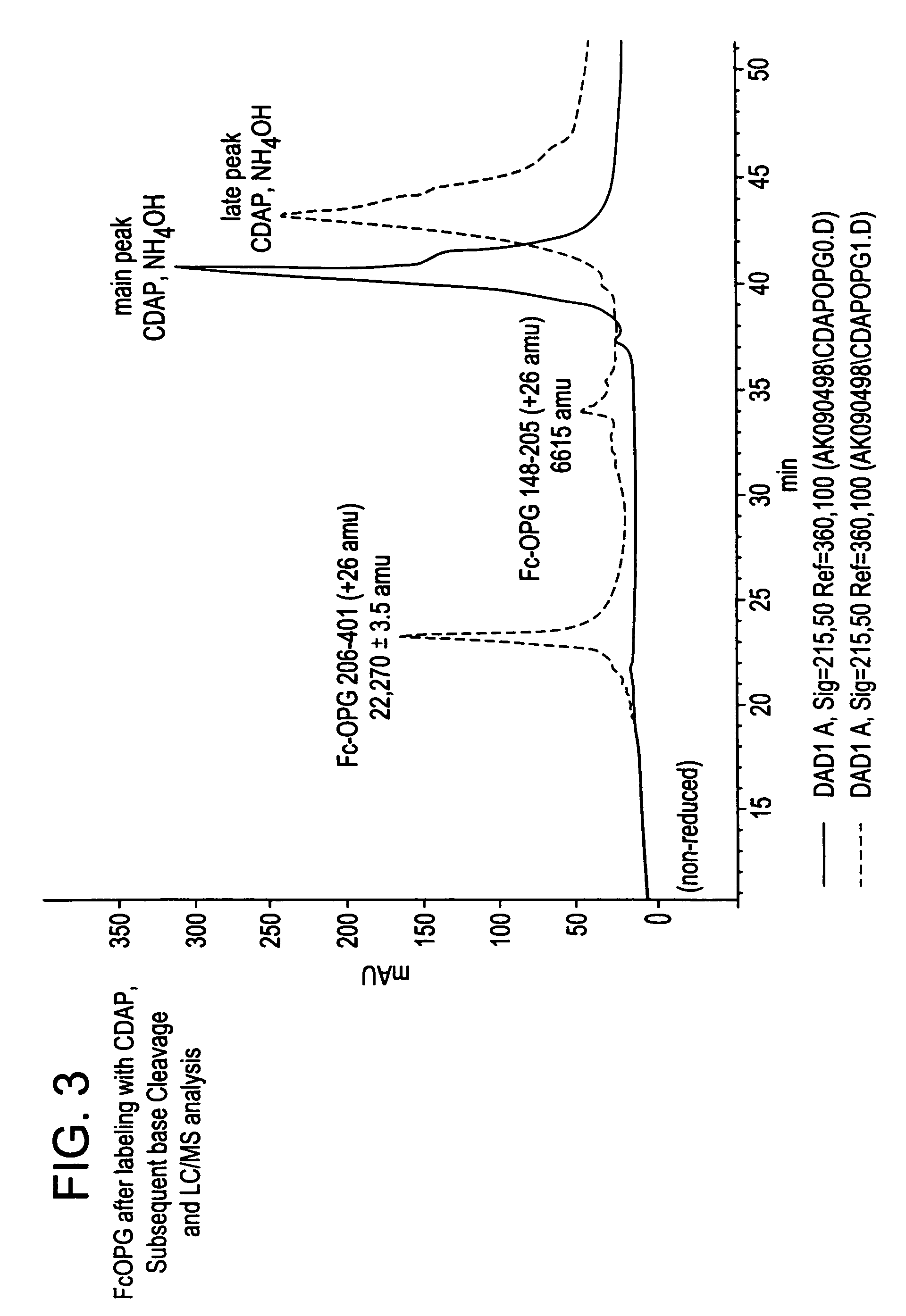Process for correction of a disulfide misfold in Fc molecules
a technology of fc molecules and disulfide misfolds, which is applied in the field of process for correction of disulfide misfolds in fc molecules, can solve the problems of aggregation or stability problems in production, limited use of fc fusion molecules,
- Summary
- Abstract
- Description
- Claims
- Application Information
AI Technical Summary
Benefits of technology
Problems solved by technology
Method used
Image
Examples
working examples
[0148]The following disclosure(s) are illustrative rather than limiting.
example 1
[0149]Identification of cysteines in a Fc construct of osteoprotegerin by CDAP labeling and alkaline-induced cleavage with LC-MS analysis
Abstract
[0150]Purpose. To assay for cysteines in a Fc construct of Osteoprotegerin stored in acidic media and to ascertain their location.
[0151]Methods. The reagent 1-cyano-4-dimethylamino-pyridinium tetrafluoroborate (CDAP) was employed to selectively cyanylate stable free-sulfhydryl groups at pH 4. Cyanylation reactions were analyzed by HPLC coupled with mass-spectral analysis (LC-MS). Reversed-phase HPLC was used to separate component peaks from the native and CDAP-reacted samples. The reversed-phase samples were collected, introduced into a solution of aqueous ammonium hydroxide plus guanidine hydrochloride and subsequently analyzed by LC-MS. Results. Reversed-phase HPLC analysis of Fc-Osteoprotegerin gave two peaks. LC-MS of the primary CDAP reaction revealed selective cyanylation of two-sulfhydryl groups in a peak that represents approximatel...
example 2
[0167]Purpose. Significant differences were observed in the stability of Fc-OPG as a function of copper treatment of the bulk protein, where Fc-OPG treated with copper was significantly more stable than Fc-OPG that was not. Specifically, the Fc-OPG that was not treated with copper was more prone to aggregation than the copper-treated Fc-OPG. The improved stability of Fc-OPG is thought to be due to the conversion of an unstable fraction of Fc-OPG with incomplete disulfide structure to a form with intact disulfide bonding upon treatment with copper ion.
[0168]Methods. Reversed-phase chromatography: Reversed-phase chromatography was performed on a Hewlett-Packard 1100 or 1090 HPLC system equipped with a diode-array detector and controlled by Chemstation Software. Fc-OPG samples were analyzed on a Zorbax (4.6 mm×25 cm) 300 SB column. The column is initially equilibrated at 90% buffer A (HPLC grade water containing 0.1% TFA). The samples were eluted with a linear gradient of 4.2% buffer B...
PUM
| Property | Measurement | Unit |
|---|---|---|
| Molar density | aaaaa | aaaaa |
| Molar density | aaaaa | aaaaa |
| Concentration | aaaaa | aaaaa |
Abstract
Description
Claims
Application Information
 Login to View More
Login to View More - R&D
- Intellectual Property
- Life Sciences
- Materials
- Tech Scout
- Unparalleled Data Quality
- Higher Quality Content
- 60% Fewer Hallucinations
Browse by: Latest US Patents, China's latest patents, Technical Efficacy Thesaurus, Application Domain, Technology Topic, Popular Technical Reports.
© 2025 PatSnap. All rights reserved.Legal|Privacy policy|Modern Slavery Act Transparency Statement|Sitemap|About US| Contact US: help@patsnap.com



